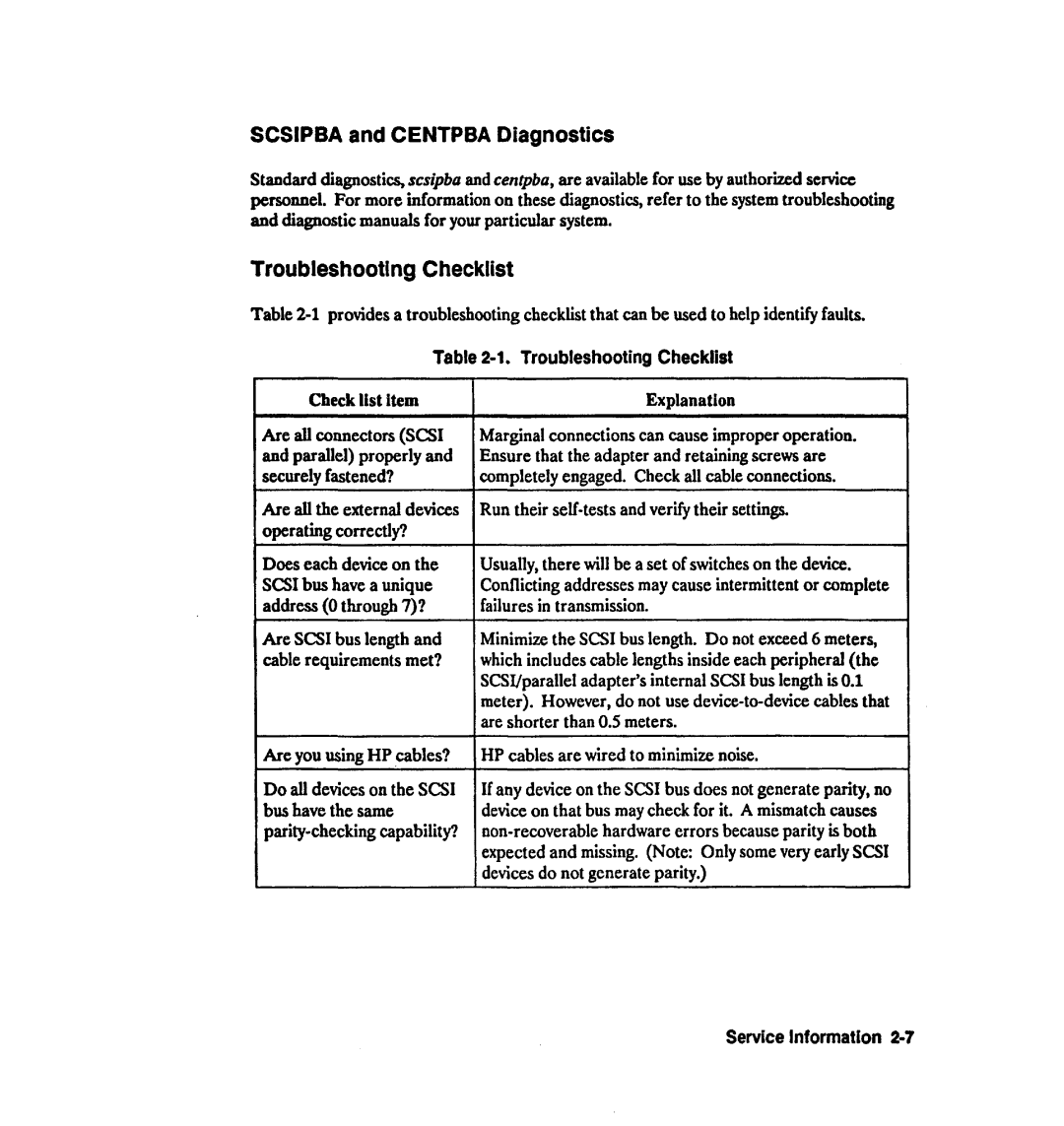HP 28642A HP-PB Scsi HP 28655A HP-PB SCSI/ Parallel
HP HP
5960-3126 El091
Print History
Safety Considerations
@Hewlett-Packard Company, 1991. AI1rights rcservcd
Installation and S&vice
HP 28642A and HP 28655A at a Glance
Product Description
This Book
Table of Contents
Page
Installing HP 28642A/28655AAdapter
Lnstalllng the HP 28642A/28655A Adapter
Verify Product Contents
Prepare to Install the Adapter Card
Observe Antlstatic Precautions
Gather Tools and Accessories Needed
Record Adapter Card Identification Information
Table l-l. Scsi Cables LengthsDescription meters
Dependent requirements that are not noted here
Peripheral to 92222A
Data corruption Installing the Adapter
Shut Down the System and SwZtch Off the Computer
Remove
Create
Check the Card’s Hardware Configuration
Figure l-4. Default Switch Settings Installing the Adapter
Set the Desired Parity-Checking CapabUity
= closed = open Installing the Adapter l-9
Set the Scsi Bus Address
Scsi Bus
Address
Verify that Resistor Packs are Properly Installed
Two resistor packsmust be installed
Install and Connect the Card
Select an Appropriate Slot
HP-Pa Standard Power Symbol
Systemperformance implications, if any
Record the Slot Number
Computer hardware limitations for l/O cards, if any
Prepare the Slot For Use
Ignment Hole
Page
Card guides. If the problem persists,get help
Insert the Card into the Slot
Supplied with this product provides a thumbscrew connector
Attach the Card Cables
Installing the Adapter l-19
Connect Your Peripheral Devices
Connect Your Single-Ended Scsi Devices
Properly on the SCSIbus
Terminate the Scsi Bus
Device operation on the SCSIbus
12. Scsi Bus Example Installing the Adapter
Scsi Cable Length Example
TurnPowerOn to Peripherals, Then to the Computer
Connect Your Parallel Device, If Applicable
Reassemble your computer
Two meters
In/Out
Signal Name
24Installing the Adapter
Pin25
Turn Power On to Peripherals, Then to the Computer
Data corruption or loss,or damageto hardware
MPE XL Systems
Set Up the Operating System
HP-UX Systems
Verify Operation
ServiceInformation
Service Information
Exchange Assembly
Exchange adapter card assembly
Field Replaceable Units
Flgure 2-1. Location of Board Component FRUs
Board Components
Other FRUs
Self-lestFailure
Troubleshooting Tools
Should be performed by authorized servicepersonnel only
Operation. Refer to your systemreference manuals
Boot failure occurs
Self-Test Failure LED
Scsipba and Centpba Diagnostics
Troubleshooting Checklist
Does any device require a special SCSIterminator?
Removal/Replacement Instructions
Removal/Replacement of the Card
For card removal, follow the procedures below
Removal/Replacement of Card Components
Minimize touching the connector pins
Also be determined from the,scsipbadiagnostic
Service Information 2-l
Damagewasextensive, you may need a new component
Type and rating
Can continue to operate normally
Diagnostic
Flgure 2-3. Replacing the Termpwr Fuse Service Information
Reshipment Guidelines
1green
Technical Specifications
General
IElectrical +5 Vdc
IPhysical IEnvironmental
American National StandardsInstitute Backplane
Configuration
Glossary
FRU
Host adapter Seeadapter
HP-PB
Precision Bus See HP-PB
Complies with the Scsi specification X3.131 Glossary
Parallel port
SCSI-2
Termination
Index
Index t
Cable
Card version...14
Identification information...l-4 installing
Part number...2-3 Field replaceable units se-eFRUS
FRUs...2-3
HP Precision Bus SeeHP-PB HP-PB
Physical specifications...2-16 Index
Loopback hood...2-4
Power
Product contents...13
Resistor pack...&10
Self-test failure LED...2-6 shut down
Storing adapter cards...l-3 switch
During installation/removal..J-6,1-19,2-10
Troubleshooting..2-8
Ylrlbo~
5960-3126 El091

